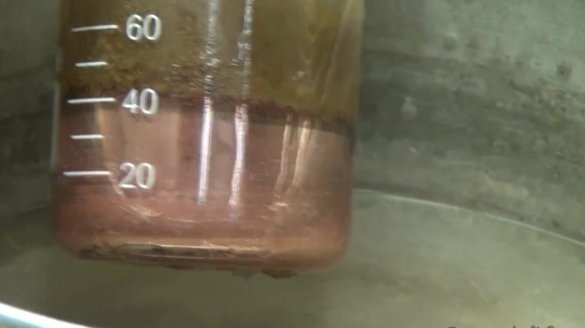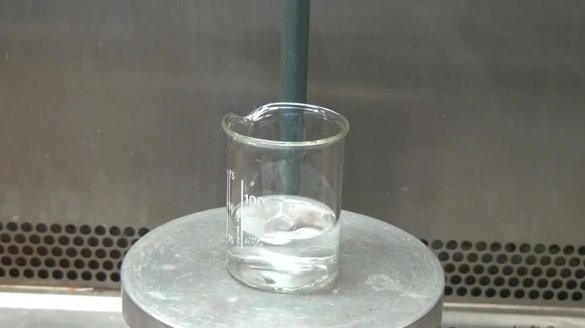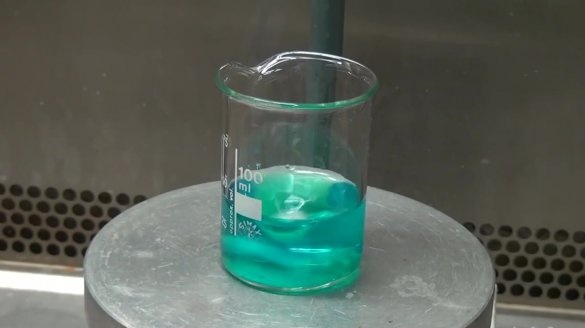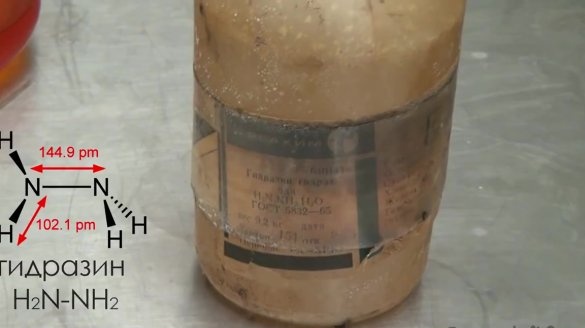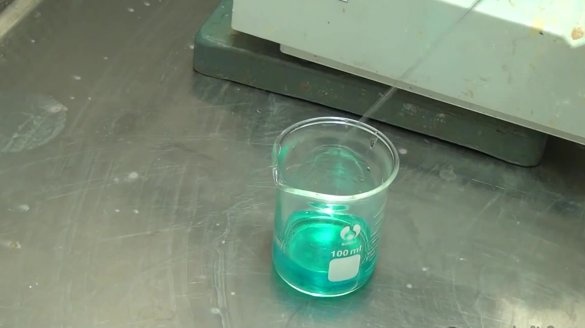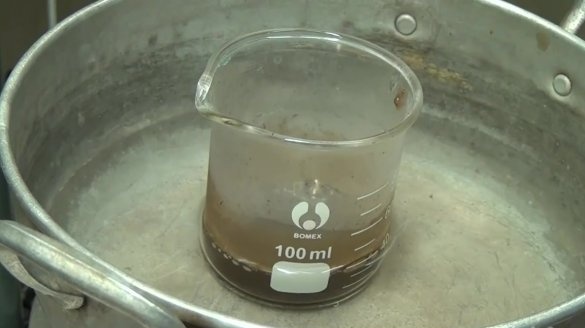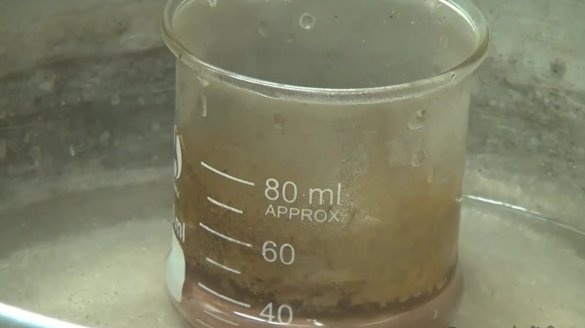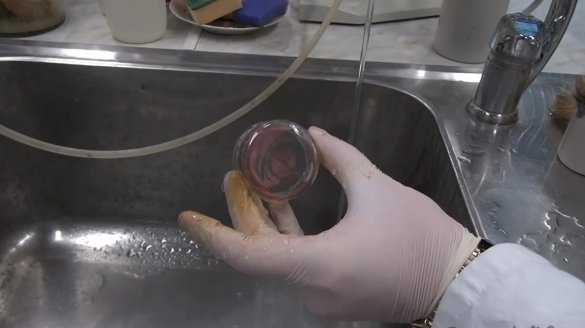In this material we will conduct a rather unusual experiment in which we obtain copper. The experience is also known as the reaction of a copper mirror. This reaction consists in the restoration of copper to a metallic state and its deposition on the surface of a glass cup.
We suggest watching a video in which the experience process is shown
[media = https: //www.youtube.com/watch? v = I-f1Ngrc0gs]
So what we need:
- a small glass;
- water;
- copper sulfate;
- hydrazine;
First, pour 50 ml of water into a small cup.
Then dissolve in water about 7 grams. copper sulfate, stirring water on a magnetic stirrer.
We will restore copper with a metal consistency using hydrazine. In order to obtain metallic copper, add a small amount of hydrazine to a glass of copper sulfate.
Immediately a reaction occurs in which gaseous nitrogen is released, and small particles of copper begin to form in the glass. Hydrazine is a very good reducing agent and restores copper from a divalent state to metallic.
So that these copper particles settle on the walls of the cup, we heat it in a water bath.
After some time, a beautiful layer of metallic copper begins to settle on the walls of our glass. Along with this, a copper mirror begins to form.
After about 15 minutes of heating, a shiny and even layer of metallic copper formed on the walls of the cup.
It should be noted that the layer formed on the walls of the cup is rather fragile, and it is easy to wash it off with a brush.
That, however, is not all. Before starting to use hydrazine, the author of the experiment tried to restore the metallic state of copper using methanal or formaldehyde, but he did not succeed in this experiment.

